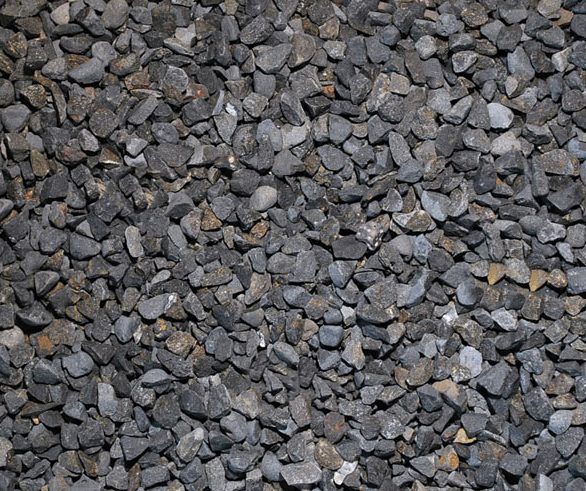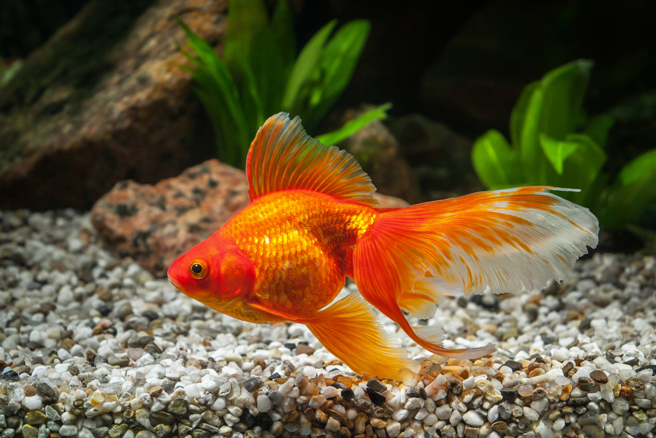Brief information on growing aquarium substrate.
Aquarium Substrate
When it comes to the proper breeding of fish and maintaining proper cleanliness, the correct substrate for an aquarium is a key issue. Learn more about which aquarium substrate to choose for better plant growth!
What Gravel to Use in an Aquarium?
Investing in high-quality gravel for your tank will undoubtedly improve the quality of life for your ornamental fish and plants. Choosing the right substrate for your aquarium not only determines the appropriate conditions but also the aesthetic appeal of each tank. However, before you decide which gravel to choose for your fish and plants, be sure to familiarize yourself with the types of substrates and the possibilities each offers. The quality of the sand or gravel you choose is very important as it will affect the development of aquatic plants, pH levels, and other water parameters. Reliable products will protect the aquarium from the growth of harmful bacteria and ensure proper and basic balance, which every aquarist relies on.
To date, gravel is the most commonly chosen substrate for almost every aquarium. Both advanced breeders and amateur aquarists use it. This is a good choice because most plants root well in a substrate with a grain size of 1 to 3 millimeters. Of course, there is no answer to the question of what type of grain is best for every aquarium—it entirely depends on what you want to grow in it. For all bottom-dwelling fish, grains with a size range of 3 to 10 millimeters are safe. Remember that substrates with a grain size of 3 - 10 millimeters have smooth edges, making them suitable for all fish.
In general, three types of gravel are recommended for most aquariums:
-
Quartz Gravel: This common substrate is usually gray or white and is ideal for bottom fish due to its smooth edges. Light-colored substrates will contrast nicely with a heavily planted aquarium.

-
River Gravel: Typically found in natural colors such as gray, green, and red. It looks natural and, due to its multicolored appearance, can visually blend well with the aquarium environment and plants.
-
Basalt Gravel: This is black gravel. Dark basalt gravel is very aesthetically pleasing and perfect for freshwater aquariums. Generally, basalt is a material with very sharp edges, which can harm bottom fish. Therefore, when deciding on a basalt substrate, ensure its edges are rounded. This type of substrate will certainly highlight the beauty of light-colored fish.

What Substrate for a General Aquarium?
The most common substrates for a general aquarium are gravel or sand. Sand often has a reputation for being unsuitable for tanks, but it turns out this is not true at all. The key is to choose high-quality sand. Fine-grained sand is a better solution than coarse sand because coarse sand can cut off water supply to plant roots, preventing them from getting the nutrients they need for normal development. This can cause plants to start rotting, leading to the death of the entire plant.
When it comes to the complete setup of a given tank, volcanic substrate is also a very good choice. Volcanic substrates are characterized by very interesting colors and are rich in micro and macro elements, significantly enriching the ecosystem of the entire tank. It’s worth knowing that such volcanic substrates also make excellent biological filters for aquariums, making the entire tank cleaner.
Honestly, choosing the right substrate for your aquarium is a real challenge because the decision is not only about aesthetics. Properly chosen gravel or sand is an important foundation for live plants, supporting their normal development and preventing the growth of harmful bacteria and microorganisms in the planted tank. The choice of aquarium substrate is very important as it primarily determines the optimal development of each organism.
What Substrate for a Planted Aquarium?
The grains particularly recommended for planted aquariums should be between 2 and 10 millimeters, as this value allows proper rooting of live plants. Many aquarists believe that fine-grained sand is not suitable for a planted aquarium substrate, but it’s worth noting that there are fish that like to bury themselves in the sand, making fine sand suitable for aquariums.
If you decide to cover the substrate of a planted tank with gravel, be aware that if you plan to place aquarium plants with extensive roots in the tank, you must pay attention to the grain size of the aquarium substrate—the larger the pebbles, the better for deep-rooted plants. It’s worth mentioning that lining the aquarium with only gravel is not suitable for planted tanks. It’s recommended to enrich it with fertilizer balls or other forms of fertilizers (such as sticks or tablets). It’s best to nourish the substrate properly from the start, but the arrangement should be adjusted to the specific needs of different types and species of plants. Such nutrient-rich substrates will definitely make your plants grow healthier.
How to Prepare the Substrate for an Aquarium?
Regardless of its origin and type, the substrate should be carefully cleaned before placing it in the aquarium. To do this, sand or gravel should be thoroughly rinsed, sometimes boiled. An exception is the substrate for planted aquariums, which should not be rinsed during aquarium setup unless otherwise recommended by the manufacturer. The substrate in a general aquarium should be periodically cleaned with a gravel vacuum to remove light debris from the bottom without moving the gravel. It’s best to combine this with water changes. Sometimes, under-gravel filters are also used to remove debris from the substrate during the tank's daily operation. Properly prepared substrates contain the right amount of micro and macro elements, which you can combine yourself or use ready-made substrates that are increasingly popular due to the effects that can be achieved in the tank with ready-made materials.
Active Substrates
Most substrates for planted tanks have one thing in common: they are all clay-based. This natural substrate material is an excellent substrate for any tank because clay absorbs and retains toxins, helping to maintain water quality. Clay also has the ability to take nutrients from the water and transfer them to the plant roots. This special ability of clay is always appreciated but not essential. Moreover, active substrates for aquariums contain plant fertilizers, have optimal grain sizes for root growth, and maintain the desired hardness and low pH levels of the water. Such substrates usually last for some time. They have a very positive effect on the appearance and growth rate of live plants. Due to the key nutrients contained in these substrates, plant development is significantly better than using ordinary gravel without any additives. Many of these substrates contain various minerals that, due to their coarse structure, can reduce KH and GH, stabilize pH levels, clarify water, and support biological filtration, making them perfect for beneficial bacteria colonization. These substrates have many filtering and adsorption properties and are safe for live plants and animals. When setting up a biotope aquarium, be careful with activated substrates, as they especially absorb humic compounds that are crucial for blackwater biotopes. Another example is the African lake biotope, where the pH should be higher than in general aquariums for optimal development of African cichlids. This is why we recommend using substrates that are suitable for the natural habitat you want to replicate, as substrates have a significant impact on water parameters.
As you can see, different substrates can be used for both fish tanks and planted tanks. While in the case of biotope aquariums, the substrate is related to the fish's natural environment, in general aquariums, the substrate depends on the owner's personal preferences. What do you think is the best substrate? We are looking for your opinions!



















































































































